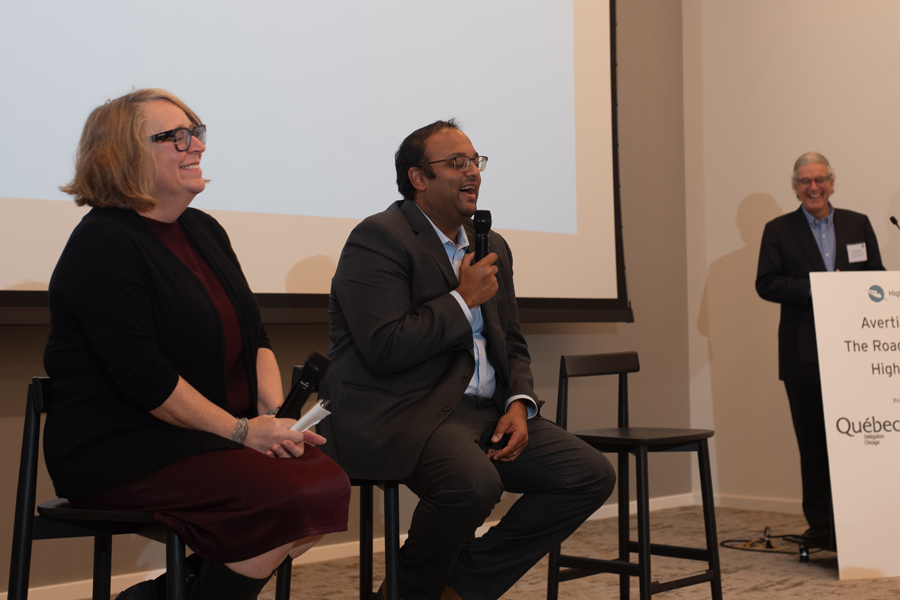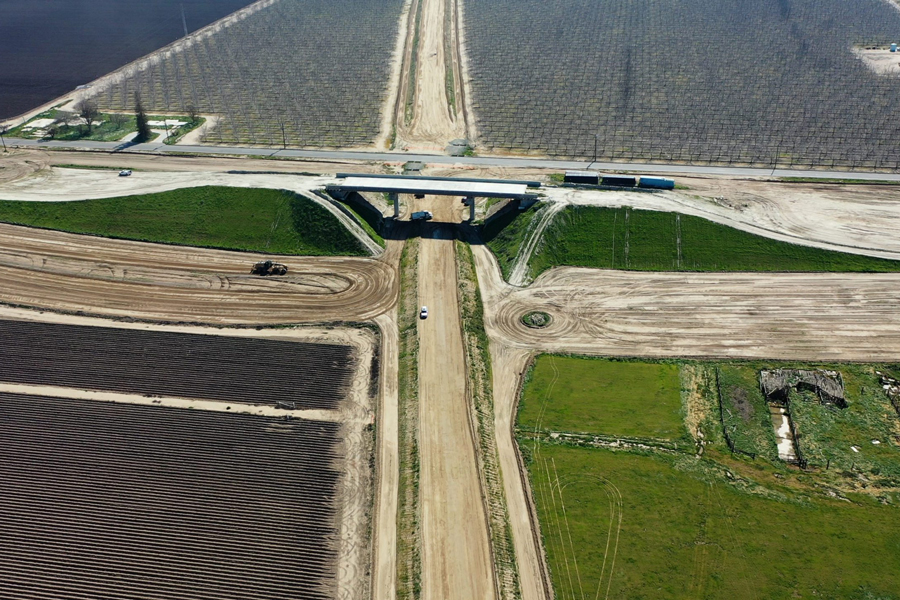It's my first Giving Tuesday with the High Speed Rail Alliance, and I'm asking for your help to build a fast, frequent rail network in the U.S. Make your early Giving Tuesday gift today I joined the HSRA team in September 2025, and it’s been amazing to connect with so...
Trains in Illinois are teetering on the edge of a fiscal cliff.
The General Assembly’s work for the year is set to end on Oct. 30, and transit agencies across the state will impose service cuts—up to 40% starting in mid-2026—if the House fails to act on a bill passed by the Senate in May of 2025, H.B. 3438.
“If we don’t fund this, a million-plus people have to find another way to get to their job, their school, and their doctor,” said Sen. Ram Villivalam, chairman of the Senate Transportation Committee. He spoke at an event in Chicago Oct. 10, organized by the High Speed Rail Alliance, that focused on the Fiscal Cliff and the challenges of building better transit systems in Illinois.
“There is an impact to everyone—whether it’s direct or indirect—and that’s why we have to get this right,” Villivalam said.
Take Action
Asl your representative vote YES for fast, frequent, and affordable trains!
Underscoring the stakes, a new analysis by the Natural Resources Defense Council found that one in three Americans “cannot reliably count on access to a vehicle,” and that 16 million Americans of driving age live in households without a car or a truck.
The Senate bill invests $1.7 billion annually in transit systems and intercity passenger rail. It would mark the first time that transit funds could be used for passenger train projects in Illinois. And the Alliance is pushing for the House version to include funding for intercity bus service.
A $1.50 tax on all food and package deliveries made by motor vehicle would fund the intercity passenger rail portion of the bill. Alliance executive director Rick Harnish noted that it’s vital for advocates to let their state representatives know that they support this tax, which is “the best thing you can do to get passenger rail moving in the entire Midwest—and, by extension, the country.”
Meanwhile, the bill’s funding for transit will allow systems throughout Illinois to begin modernizing after decades of decline and underinvestment. “Our state invests a lot smaller share in transit operations than our comparable-system states around the country,” said Amy Rynell, executive director of the Active Transportation Alliance. “As we’ve seen transit grow and ridership grow—and the needs grow—our state hasn’t been keeping up.”
Harnish singled out the Chicago Quantum Exchange on Chicago’s South Side as a good example of how Chicago can build on its comparative advantages by investing in world-class transit. The hub is devoted to putting the city and the region at the forefront of developing quantum technology.
“The governor just broke ground on the first building in that park on Sept. 30, [which] not only shows that this city is a great place to locate but helps us redefine what the city is,” Harnish said. He noted that the new hub will bring together talent from institutions all over the Midwest, and that “we can use that as an opportunity to rethink what transit is.”
Three levels of rethinking transit
Rethinking transit involves at least three levels. The first is increasing service significantly as part of a broad transition from commuter rail to regional rail.
In the regional rail model, trains run frequently all day, to all parts of the city and region, and serve customers of all types—not just commuters who use it during traditional rush hours. Chicago’s Metra system has begun this transition, and new funding from H.B. 3438 will accelerate it.
Speaking at the event, David Kralik, director of planning and programming at Metra, said that surveys confirm that “frequency is the key. Riders want more frequency, and if we can get them to half-hour frequency throughout the day, they will start to choose Metra as a primary travel option. … That’s the goal we’re working toward on most of our lines.”
The second level of rethinking transit involves governance.
H.B. 3438 aims to break down the barriers that create obstacles for riders and inefficiencies for the systems. For example, customers should be able to transfer among CTA, Metra and Pace vehicles with a single ticket or pass. That isn’t possible now because each system exists in its own silo, with its own governing board.
Rynell pointed to these silos as one of the great barriers to better transportation in the Chicago region and throughout Illinois. With multiple entities defending their own turf, the system “is not designed in a way to incentivize … a single experience.” which makes it more expensive and cumbersome to ride trains and transit in Illinois than it should be.
The third level of rethinking transit has to do with creating the foundation for high-speed rail in Illinois.
People tend to think of high-speed rail and transit in separate categories, but the Alliance’s integrated network approach takes a big-picture view of the relationship. More riders on fast, frequent trains will mean more demand for quality transit systems, and vice versa. For example, California’s Bay Area built an electrified, regional rail line, in part as a result of the state’s planning for, and ongoing construction of, a high-speed line from San Francisco to Los Angeles.
In that vein, Peter Williams of Quandel Consultants offered an update on the firm’s study of a high-speed line from Chicago to St. Louis. Next year, Quandel will present its finding to the Illinois High Speed Railway Commission, with projections of ridership, fares, trip times and alignments for several potential routes. The Alliance has a seat on the Commission.
“What we will end up with is a range of route options which, at the end of the study, the Commission and all the commissioners will be able to compare the route options, the alternatives, and understand the tradeoffs between them,” Williams said. “And ultimately, vote on how high-speed rail advances in the state of Illinois.”
In response to an audience question, Harnish observed that the single most important “lesson learned” from California’s high-speed rail project is to “get construction started.”
“Let’s just be clear,” he said, “this is the most important lesson: If you can get construction started, start construction. And figure it out.”
In September, California’s General Assembly approved $1 billion annually through 2045. In a recent projected update, the California High Speed Rail Authority reported that 70 miles of guideway and 58 structures are complete on the 171 miles of line under construction in the Central Valley.
“Everything in [the California High Speed Rail Authority] right now is focused on, What decisions do we have to make to get trains running?” Harnish said. “And I’m really excited about this new stage of development.”
The Latest from HSRA
Our Latest Blog Posts
Check out the latest news, updates, and high speed rail insights from our blog!





